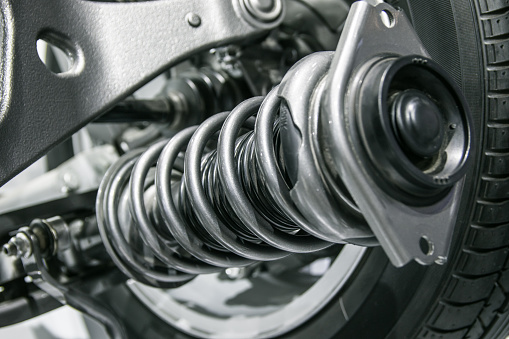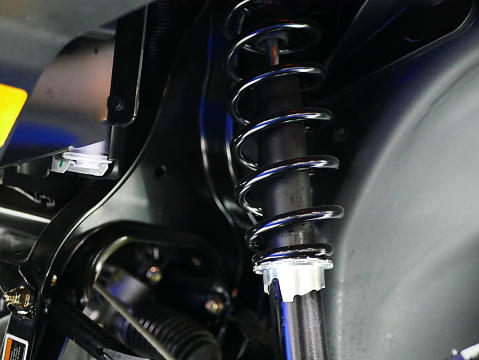Most people don’t worry about their suspension system until it stops working properly. When this happens it is very obvious as you feel like your car has a mind of its own!
The system is a spring-like structure attached by the sides of the wheels and enables the frame to hold the weight of the body. It maximizes the friction between the tires and the road surface. This provides steering stability, good handling, and comfort. The average car is over one ton of metal driving at high speeds and even if a road surface looks smooth, without the suspension system it would be shaken to pieces.
The suspension system allows the body and frames to move undisturbed and at the same time lets the wheels follow the bumps along the roads’ surfaces. This allows the body of the vehicle to be undisturbed while traveling over rough and bumpy roads. It keeps the tires in contact with the road and due to the friction between the tires and the road allows for steering, acceleration, and braking capabilities. It also lets us corner while driving, transferring the weight of the car from the high side to the low side.
Here Is How It Works:
- The frame acts as the load-bearing component that supports the car’s engine and body
- The suspension system supports the weight, absorbs shock, and maintains tire contact with the road
- The steering system enables the driver to guide the vehicle
- The tires and wheels make a vehicle’s motion possible by enabling friction which enables the tires to grip the road
- Springs compress and expand to absorb wheel motion
- Dampers/shock absorbers keep your ride from being too bouncy from the springs. They adjust to road conditions and control unfavorable motions including bouncing, swaying, brake diving, and acceleration squat.
- Dampers/anti-sway bars or struts are shock absorbers mounted inside a coiled spring. They provide the same function as the shock absorber, plus structural support for the vehicle suspension.
You can thank your suspension system for the smooth ride. If your ride isn’t as smooth as it should be, call your car care provider today.
Certified Auto Specialists: the friendlier and more helpful auto shop! Feel free to call 626-963-0814 with any questions and we will be glad to help, or visit our website at CertifiedAutoCa.com.



